Recent Posts
Why Should You Call SERVPRO® After a Fire?
2/28/2024 (Permalink)
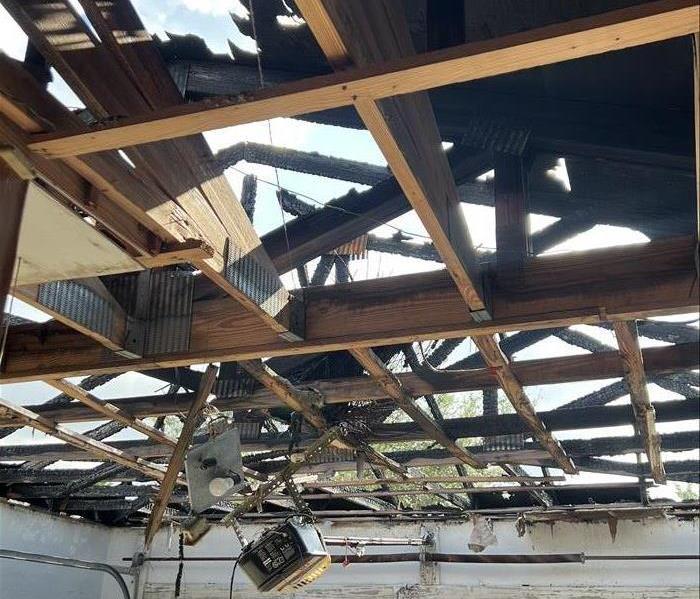 After this garage fire, the home was badly damaged by smoke and soot. SERVPRO of East Coral Springs was able to remediate the home.
After this garage fire, the home was badly damaged by smoke and soot. SERVPRO of East Coral Springs was able to remediate the home.
Why should you call SERVPRO® after a fire?
After a fire, smoke, soot, heat, and water can damage your Coral Springs home or business. If you aren’t sure how to handle the aftermath of a fire, it's wise to call in the experts at SERVPRO of East Coral Springs. They'll be able to help you assess just how severe the damage is and what you need to do next.
Soot and smoke can cause problems.
Even though the fire may not have caused much damage to your home, you still need to call a restoration professional. Soot and smoke can cause health effects, damage to your home's structure, and mold growth. They can also cause water damage and electrical problems. This can lead to even more damage on top of what was already done.
By calling a restoration professional after an accident, you can avoid these potential issues!
Cleaning up even a small fire isn't a DIY job.
While cleaning up may be the first thing you do after a fire, it shouldn’t be the only thing. If you don't know where to start, call a restoration professional. A professional can help ensure that your property is protected while they're working on repairs and minimize further damage caused by water or smoke. The fire restoration experts can also assist with filing insurance claims and making sure everything gets covered—including belongings that were damaged in the fire but weren’t initially declared as part of your claim (like smoke-damaged clothing). They also know how to handle hazardous materials so that these dangerous materials aren't spread around your home when you try to clean up on your own!
There are a lot of considerations after a fire, but their restoration experts can help.
A fire is a traumatic event, and you'll need to take care of the aftermath. There are many factors that should be considered when deciding what to do after a fire, including the extent of damage and how much time has passed since it happened.
People often think they can handle cleaning up even a small fire themselves, but this isn't usually true. In addition to damage caused by the actual flames, there are other elements that can cause problems later on: soot and smoke residue will stick around for months if not cleaned regularly; water used in fighting the fire may have damaged your belongings; chemicals used to extinguish fires might have left behind lingering odors or stains; electrical wiring might need repair or replacement due to damage from heat exposure; plaster walls might crack from excess moisture.
If you've suffered a fire in your home or business, don't worry. The team at SERVPRO of East Coral Springs is here to help. We can take care of everything from removing soot and smoke damage to restoring your property back to normal. It's important that you act quickly after a fire to avoid serious problems for your home or business. If you need any assistance please call us today at (954) 406-7771.
Types of Mold Found in Homes and Businesses
2/28/2024 (Permalink)
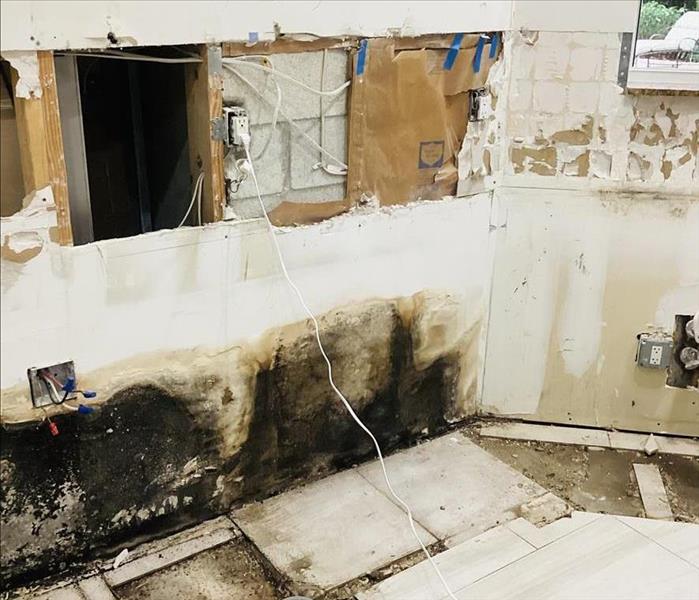 Mold was discovered in this Parkland home during a kitchen remodel. SERVPRO was contacted right away and was able to professionally remediate it.
Mold was discovered in this Parkland home during a kitchen remodel. SERVPRO was contacted right away and was able to professionally remediate it.
Mold growing in your Parkland home or office can cause serious damage and unsafe air quality, so it's important to know the types of molds that can be affecting your household or business. If you see mold or suspect that there is mold growing, contact the certified professionals at SERVPRO® to test for and remove any mold.
Cladosporium
Cladosporium is an airborne mold that can be found in soil and decaying plants. It can grow on wet, damp surfaces such as walls, ceilings, behind base boards, around toilets and other plumbing fixtures, and in shower stalls.
Alternaria
Alternaria is a common mold that can grow in homes. It can be found on plants, wood, and soil. It will also grow on fabrics and other household items if they are left damp for long periods of time. This type of mold grows best in dry areas with high temperatures, such as attics where there is little ventilation. Alternaria may also be present when there has been a flood or any other water damage to your home.
Aspergillus
This mold often grows on things like fabrics, ceiling tiles, and carpeting. It is a common type of mold to see after a water loss has occurred in your home or business. That is why it's important to call a certified drying team to properly dry wet materials after a leak or flood.
Penicillium
Penicillium is a type of fungus that can grow on many different types of food. It can be found in the soil, on plants, and on fruit and vegetables. Penicillium grows best when it's warm and damp, so you'll often find it indoors where there is high humidity locations such as Florida or moisture from leaks or flooding.
Aureobasidium
Aureobasidium is a fungus that grows on organic materials, such as house dust and plants. It can be found in homes, schools, and offices. This mold can grow on a wide variety of materials including wood products like particle boards or plywood; paper products such as books or cardboard boxes; and even upholstery fabrics like cotton or wool.
Mucor
Mucor is a fungus that can grow on food and other organic materials. It can be found in soil, air, and water; it grows on damp building materials such as wood, and cardboard. and plasterboard. Mucor spores are microscopic so they may not be visible to the naked eye.
Stachybotrys Atra
Stachybotrys Atra, also known as black mold, is a fungus that can grow on many surfaces, including wood, paper products, and textiles. Black mold is especially common on the wallboard.
It is important to know the types of mold that can grow in your home or office.
Mold is a fungus that grows in damp areas and doesn't need light to survive. It can be hard to see unless you're looking for it, but if you know what to look for and where to look, you may be able to spot mold before it affects your health.
Mold likes humid places with poor ventilation like basements and crawl spaces, as well as inside walls or behind base boards. If there's enough moisture in your home or an area where there has been moisture build-up (like a bathroom), mold will grow there as well.
We hope this article has helped you understand the different types of molds that can grow in your home or office. If you're concerned that there might be mold in your house or business, please contact SERVPRO of East Coral Springs! (954) 406-7771
The Dangers of Flood Damage in Florida
2/28/2024 (Permalink)
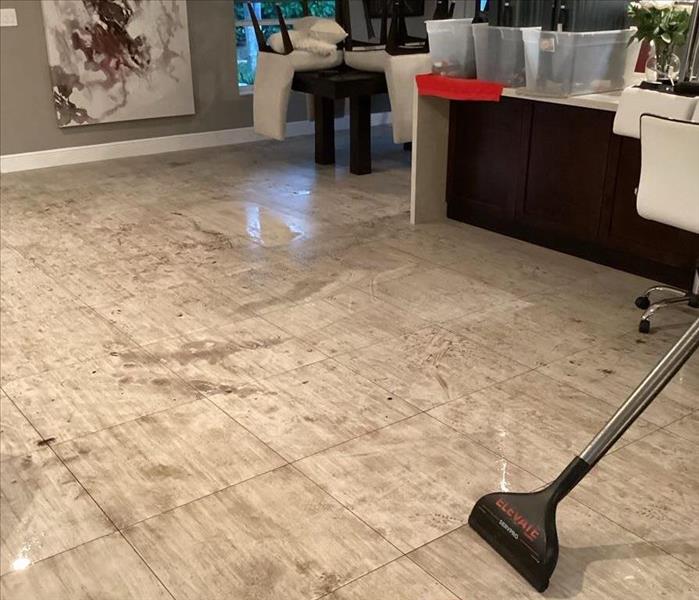 This beautiful Fort Lauderdale home was impacted by rising flood waters after the area had flash floods. SERVPRO of East Coral Springs acted quickly.
This beautiful Fort Lauderdale home was impacted by rising flood waters after the area had flash floods. SERVPRO of East Coral Springs acted quickly.
Summer in Florida means constant rains, unpredictable thunderstorms, and the inevitable hurricanes. While every rainy season is a little bit different, one thing is for certain: Florida summers are very wet. The propensity for flooding varies depending upon your exact location in South Florida. Since Florida is a peninsula state, surrounding waters make it particularly vulnerable to flooding. However, flooding is a concern for people across the country and even all around the globe.
Recent research points to the fact that rising seas levels over the next 100 years will put close to 4 million homes in the United States at risk of flooding. This means that it is now more important than ever to take the risk of flooding seriously, especially for those residents living in South Florida. With more than a thousand miles of coastline and a subtropical climate, this region is extra susceptible to floods.
Looking back in history can help to offer some perspective on flooding and its inherent risk. Some of the most well-known over the last 100 years include:
- Flash flood event in April 2023 affecting Fort Lauderdale with 25” of rain in 12 hours
- Hurricane Ian in 2022 that flooded the east coast of Florida
- Hurricane Irma in 2017
- Tropical Storm Debby in 2012
- Tropical Storm Fay in 2008
Remembering how real the threat of flooding can be is helpful to take the aftermath of rainstorms and hurricanes seriously. All Floridians, but particularly those who live near the coastline, need to understand dangers of flooding. Listening to NOAA Weather Radio is a great first step. Pay careful attention to their recommendations both before and after any storm. People who live in Tampa, Fort Lauderdale, Miami, Fort Meyers, Naples, and Sarasota should take extra precaution following adverse weather.
No one wants to deal with flood damage to your home or business, but major storms make it unavoidable at times. At SERVPRO of East Coral Springs, we have years of experience in dealing with flood damage, water damage, and storm damage. Our flood damage team goes the extra mile to ensure that our customers are safe and happy with our work. Together, we can make it “Like it never even happened.”
Keep our phone number with your storm supplies to ensure a quick and professional response to flood damage, should it become necessary. (954) 406-7771
Common Fire Safety Hazards
2/2/2024 (Permalink)
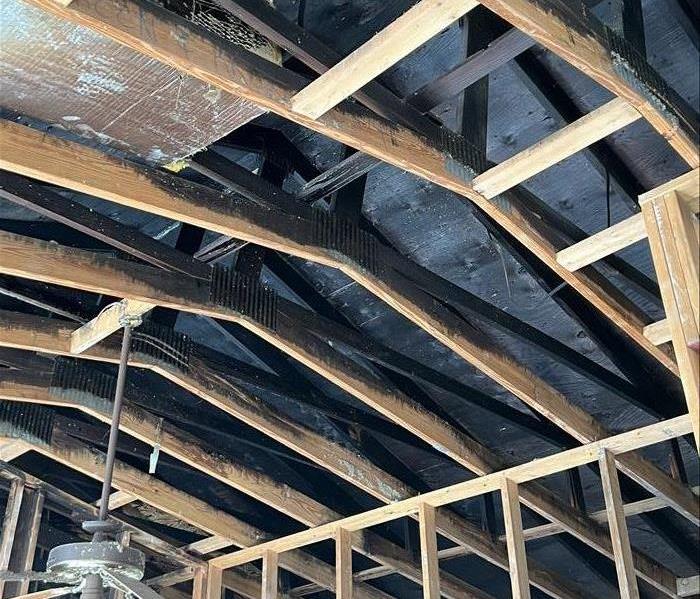 This Plantation home had a fire in the attic that caused significant damage. Luckily, the homeowner was safe and called SERVPRO of East Coral Springs.
This Plantation home had a fire in the attic that caused significant damage. Luckily, the homeowner was safe and called SERVPRO of East Coral Springs.
Did you know over 100,000 fires occur each year, costing over 2.5 billion dollars in damage?
Just like any other type of disaster, you can't always predict when a fire will break out. However, you can take steps to prevent fires from happening in your home or commercial property.
Every employee or family member is responsible for preventing fires. A safety protocol should be in place in the workplace. Keep a list of potential fire hazards posted where every employee can see it and conduct trainings frequently to remind employees of potential hazards. Emergency exits should be clear and free from obstacles. Fire extinguishers should be accessible and staff should be trained on how and when to use them. Annual fire inspections are a requirement in all commercial properties.
In the home, items such as lighters and matches should be kept out of reach at all times. A fire escape plan should be practiced regularly and emergency exits should be clear and accessible. Fire extinguishers should be kept in the kitchen, garage, and any areas with potential fire hazards.
In both commercial properties and homes, overloaded electrical outlets should be avoided at all times. Regular inspections of wiring and outlets are important as well. Smoke detectors are required and help save lives! Check your smoke detector batteries each month to ensure they are in working condition.
It is everyone's responsibility to prevent fires from happening. Following these simple steps can not only save your property from being damaged, but it can also save lives.
SERVPRO of East Coral Springs is the leader in fire/smoke damage restoration. If you have experienced a loss in your Coral Springs, Margate, Coconut Creek, or Parkland home, we can help. Call today for an inspection.
(954) 406-7771
Common Reasons Why Your Smoke Detector Might be Beeping
12/5/2023 (Permalink)
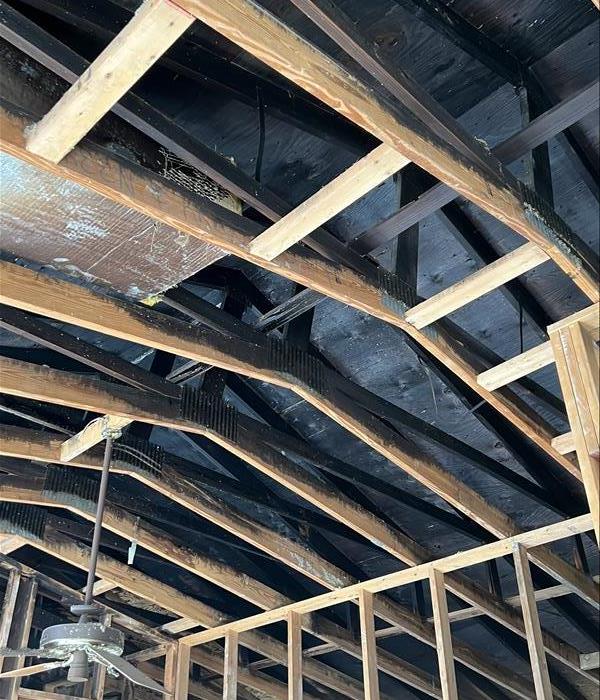 Checking your fire smoke detector monthly can help ensure your family, home, and business stay safe. It can also reduce the disruptive beeping noises.
Checking your fire smoke detector monthly can help ensure your family, home, and business stay safe. It can also reduce the disruptive beeping noises.
Fire and smoke detectors are necessary in your home and office. They save lives every day.
But, there are few things more annoying than a fire alarm that won't stop beeping in your home or office. Not only is the sound itself grating on the nerves, but it can also be a sign that something is wrong with your fire alarm system. Don't ignore it! Here are some common reasons why your fire alarm might be beeping, and what you can do to fix the issue.
Low Battery
The most common reason why a fire alarm might be beeping is because the battery is low. Most fire alarms have a backup battery that kicks in if the power goes out, and if that battery is low, the alarm will start to beep to let you know it needs to be replaced. If you hear a single beep every minute or so, the battery is likely the issue.
Solution: Replace the battery as soon as possible. Check the manufacturer's instructions for the type of battery you need, and make sure to test the new battery to make sure the beeping has stopped.
A good practice to put into place is checking your fire/smoke detectors each time you pay your electric bill. It's a quick and easy reminder each month.
Dust or Debris
Over time, dust and debris can build up inside your fire alarm, causing it to beep. This is especially common in homes that have a lot of pet dander or dust in the air. If your alarm is beeping in short bursts, dust or debris may be the issue.
Solution: Use a vacuum or a can of compressed air to clean out the inside of the alarm. Be gentle, as the internal components are delicate, and make sure to turn off the power to the alarm before you start cleaning.
Malfunctioning Sensor
The sensor in your fire alarm is what detects smoke or heat and triggers the alarm. If the sensor is malfunctioning, it can cause the alarm to beep even if there is no smoke or fire present. If the alarm is beeping in short bursts and there is no visible smoke or fire, the sensor may be the issue.
Solution: Contact a professional to have the sensor replaced. Do not try to replace the sensor yourself, as this can be dangerous and could cause further issues.
Interference from Other Devices
Some electronic devices can interfere with your fire alarm, causing it to beep. This is more common in wireless alarms, as they use radio frequencies to communicate with other devices. If the alarm is beeping in short bursts and there is no visible smoke or fire, another device may be interfering with the alarm.
Solution: Move any electronic devices away from the alarm and see if the beeping stops. If the beeping continues, contact a professional to have the alarm checked for other issues.
A fire alarm that won't stop beeping can be frustrating, but it's important to remember that it is a safety feature designed to protect you and your family. If you are unsure of the cause of the beeping, contact a professional to have your alarm checked for issues. By taking care of your fire alarm, you can ensure that it will work properly in the event of an emergency.
Improper Fire Remediation and Clean Up
2/15/2023 (Permalink)
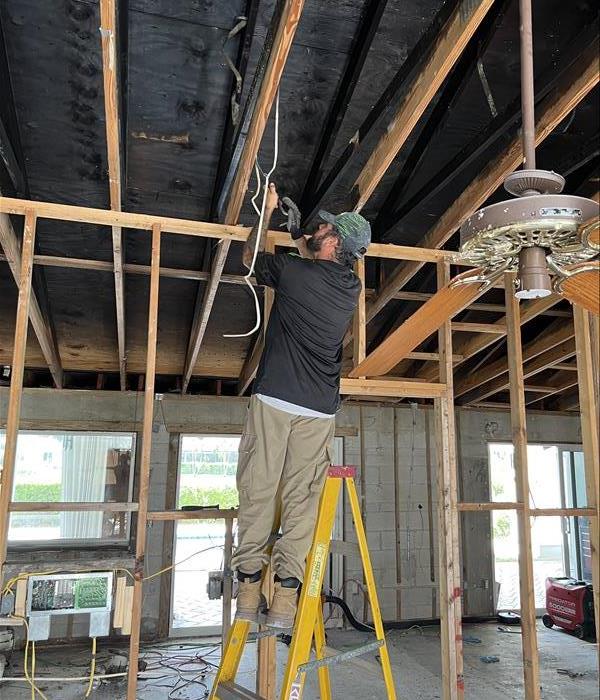 This Plantation home had a garage fire that spread to the kitchen and living areas. SERVPRO of East Coral Springs remediated the entire home.
This Plantation home had a garage fire that spread to the kitchen and living areas. SERVPRO of East Coral Springs remediated the entire home.
As a home or business owner, you likely don’t think about the long-term effects these dangerous flames can have on your family, home or business. Unfortunately, fire damage is not always visible to the naked eye and can remain hidden for months or even years after it occurred. If you suspect that the damage was not taken care of properly, then there are steps you can take to protect yourself from further problems down the road.
What Happens if Fire Damage is Unmitigated?
If fire damage is not properly mitigated, the fire damage can spread to other parts of the building. This is especially true if you have a wooden structure. It’s estimated that 80% of all fires spread and are not contained within their original area. The smoke and soot can spread to other buildings on your property or nearby. If the damage is not properly mitigated after a fire, there could be severe consequences for your neighbors as well as yourself, especially if they're in close proximity. The smoke and soot from a mishap like this could cause permanent damage to your home even after it's been cleaned up.
What to Look for After a Fire
Smoke can damage the structural integrity of a building, as well as its contents. The color of the walls and ceiling may be discolored or have a dull appearance, and there may be water stains or soot deposits on these surfaces. If you see any evidence that points to smoke damage, it is important to consult with professionals who can provide an assessment of the extent of the problem before proceeding with repairs.
Signs of water damage. Water used in firefighting efforts may cause severe structural problems due to crumbling walls and ceilings as well as mold growth if left untreated for too long after cleanup has been completed. If you notice any signs that point toward possible flooding due to firefighting activities – such as puddles under windowsills – contact professionals immediately so they can assess how best to proceed with cleanup efforts without further damaging your property's structure or contents
Contact a Professional
The longer you wait, the more damage can be caused by fire and water damage. Don't try to do it yourself, if you aren't sure what to look for contact a licensed professional immediately.
It's best to act quickly so that the dangerous bacteria and spores from ash, don't get a chance to grow into something worse.
Our team is certified in fire restoration and is here to help you with all your fire damage needs. We have the expertise and experience to get your home back to its pre-fire condition. We can also help you find replacement items for those items that were damaged or destroyed in the fire.
We work with all insurance companies to ensure your home or business can get back up and running in no time.
Call us 24 hours a day for all of your fire/smoke remediation needs. (954) 406-7771
Types of Molds found in Homes
1/17/2023 (Permalink)
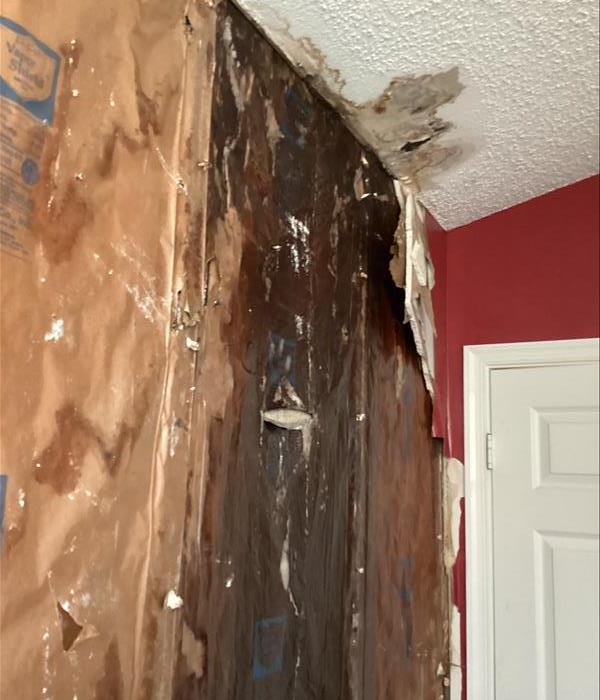 This home had an on-going roof leak that lead to harmful mold growth. SERVPRO of East Coral Springs was able to fully remediate the situation.
This home had an on-going roof leak that lead to harmful mold growth. SERVPRO of East Coral Springs was able to fully remediate the situation.
Mold growing in your Coral Springs home can cause a lot of damage, so it's important to know the types of molds that can be affecting your household. If you see mold or suspect that there is mold growing in your house, contact the certified professionals at SERVPRO® to test for and remove any mold from inside your home.
Cladosporium
Cladosporium is an airborne mold that can be found in soil and decaying plants. It can grow on wet, damp surfaces such as walls, ceilings, behind base boards, around toilets and other plumbing fixtures, and in shower stalls.
Alternaria
Alternaria is a common mold that can grow in homes. It can be found on plants, wood, and soil. It will also grow on fabrics and other household items if they are left damp for long periods of time. This type of mold grows best in dry areas with high temperatures, such as attics where there is little ventilation. Alternaria may also be present when there has been a flood or any other water damage to your home.
Aspergillus
This mold often grows on things like fabrics, ceiling tiles, and carpeting. It is a common type of mold to see after a water loss has occurred in your home or business. That is why it's important to call a certified drying team to properly dry wet materials after a leak or flood.
Penicillium
Penicillium is a type of fungus that can grow on many different types of food. It can be found in the soil, on plants, and on fruit and vegetables. Penicillium grows best when it's warm and damp, so you'll often find it indoors where there is high humidity locations such as Florida or moisture from leaks or flooding.
Aureobasidium
Aureobasidium is a fungus that grows on organic materials, such as house dust and plants. It can be found in homes, schools, and offices. This mold can grow on a wide variety of materials including wood products like particle boards or plywood; paper products such as books or cardboard boxes; and even upholstery fabrics like cotton or wool.
Mucor
Mucor is a fungus that can grow on food and other organic materials. It can be found in soil, air, and water; it grows on damp building materials such as wood, and cardboard. and plasterboard. Mucor spores are microscopic so they may not be visible to the naked eye.
Stachybotrys Atra
Stachybotrys Atra, also known as black mold, is a fungus that can grow on many surfaces, including wood, paper products, and textiles. Black mold is especially common on the wallboard.
It is important to know the types of mold that can grow in your home.
Mold is a fungus that grows in damp areas and doesn't need light to survive. It can be hard to see unless you're looking for it, but if you know what to look for and where to look, you'll be able to spot mold before it becomes a serious hazard to your health.
Mold likes humid places with poor ventilation like basements and crawl spaces, as well as inside walls or behind base boards. If there's enough moisture in your home or an area where there has been moisture build-up (like a bathroom), mold will grow there as well.
We hope this article has helped you understand the different types of molds that can grow in your home. If you're concerned that there might be mold in your house or business, please contact SERVPRO of East Coral Springs! (954) 406-7771
Smoke Odor Removal Requires Special Equipment And Knowledge
12/20/2022 (Permalink)
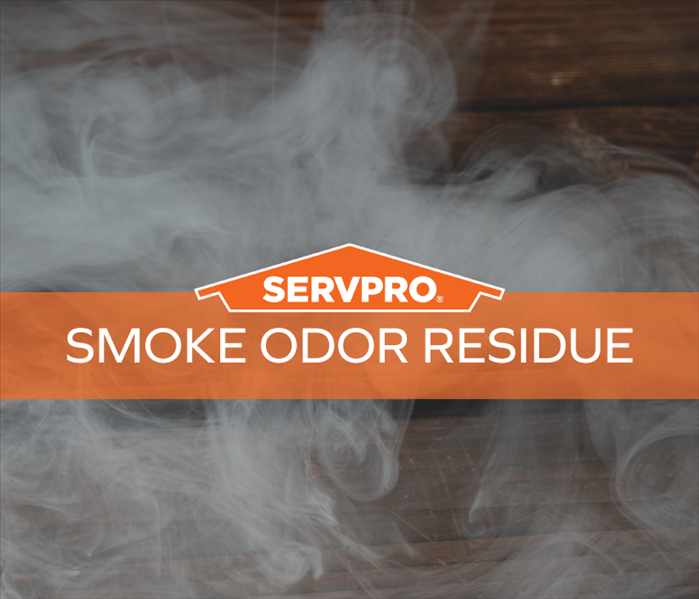 One of the main causes of smoke odors is industrial fire damage.
One of the main causes of smoke odors is industrial fire damage.
Smoke Odor Removal Requires Special Equipment And Knowledge
Smoke Odor Removal
Smoke odor in your home can be an unhealthy and frustrating problem. It's not uncommon for people to try to remove smoke odors from their homes, only to find that the smell returns. But as with most things, it's important to go into this process with knowledge about what caused the smell and how best to treat it. So let's take a look at why smoke odors return after you think they are gone.
Removing Smoke Odor
There's no one-size-fits-all solution to removing smoke odor. The nature of the problem and the equipment used are both very important in determining what will work best for your home. Smoke damage is often so severe that it can't be fully cleaned, but there are steps you can take to minimize the impact and restore some of your home's former beauty.
Removing Smoke Odor Can Take a While
There are a number of reasons that smoke odors return after you think they have been removed. The first is that the smoke odor removal process can take weeks, if not months. That’s why we recommend that you hire a professional company like SERPVRO of East Coral Springs to do your smoke odor removal work for you. We will be able to identify any hidden sources of smoke odor and remove them so that your home smells fresh, clean, and healthy again!
Do you have an indoor family member who smokes? You might still smell the smoke because there may be some remnants of tobacco left in your home. Tobacco tends to build up on walls and ceilings over time, especially in areas where people regularly smoked such as kitchens or living rooms. This buildup can cause mildew growth which releases an unpleasant smell when it begins decaying due to exposure to sunlight or other environmental conditions like humidity levels being too high indoors (which happens naturally during summer).
Fire Damage and Smoke Odor
One of the main causes of smoke odors is industrial fire damage. When a factory catches fire, it’s not uncommon for firefighters to have trouble extinguishing it completely due to the quantity of materials being used. This could include plastics, rubber, petroleum products and other volatile substances that burn easily and produce strong smells when they do so.
Even after these types of fires are extinguished, business owners may still experience lingering smoke odors because any material left behind can continue releasing fumes for years afterward. In some cases these fumes can also be toxic if there was chemical exposure during the fire itself or if an industrial process created them onsite (such as oil refineries).
Product and Equipment Matter
The type of product you use will affect how effective it is at removing smoke odors. Some products are better than others, but not all products are effective when it comes to smoke odor removal.
The most important thing to remember is that there's no single best solution for removing smoke odors from your home or car or office. You'll need to choose the right products for your particular situation and circumstances.
Knowing the Source and the Solution
Smoke odor removal requires knowledge to know what has caused the smell and how to treat it. This is where we excel. Our technicians are trained in all areas of smoke odor removal, and they work with you every step of the way.
They'll ask questions about your home or business and then come up with a plan for removing odors from your property.
A critical part of our process is determining what caused the smoky smell in the first place. For example, if you're trying to remove odors from food leftovers burning on a stovetop or in a microwave, there will be different solutions than if your home caught on fire because you forgot to empty the dryer lint tray. The key is finding out what caused the smoke odor so that we can apply the right treatment method.
After identifying where an unwanted scent comes from, we'll talk about potential solutions with you; together we'll determine which products will best address your specific needs—whether that means using ozone generators or simply airing out rooms until fresh air blows away bad smells from previous occupants' cooking experiments gone wrong.
The good news is, you don’t have to worry about this one. We know exactly how to remove smoke odors from your Coral Springs home and help you get back on track. Give us a call and we’ll be glad to help! (954) 406-7771
5 Common Causes of Noisy Water Pipes
11/10/2022 (Permalink)
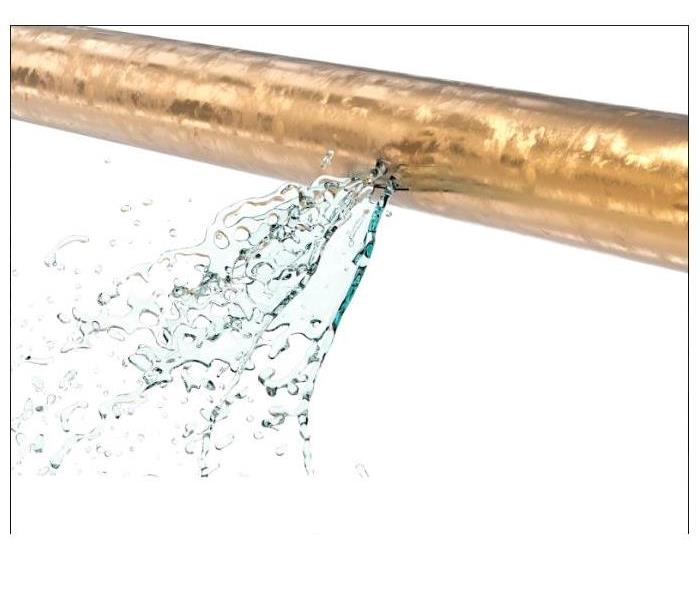 There are many reasons for noisy pipes, so it’s important to have them checked out by a professional.
There are many reasons for noisy pipes, so it’s important to have them checked out by a professional.
Dealing with noisy water pipes can be a major inconvenience, particularly when they're disrupting the tranquility of your Coconut Creek, FL home. Thankfully, the root causes of this annoyance are often identifiable and remediable. In this article, we'll explore the common triggers of noisy pipes and offer solutions to silence them once and for all.
Water Hammer: Symptom: A startling banging or knocking sound emanating from your plumbing. Cause: Water hammer results from rapid water movement within your pipes, usually caused by a sudden alteration in water pressure, such as when you turn a faucet on or off, or when a dishwasher initiates its cycle. Solution: Consider installing water hammer arrestors, which act as shock absorbers to mitigate the abrupt pressure changes.
Loose Mounting Straps: Symptom: Vibrating pipes that create an annoying buzzing sound throughout your home. Cause: Loose or improperly secured pipes can vibrate when water flows through them, leading to the audible buzzing. Consequence: Prolonged neglect may cause structural damage to your home's walls and foundation, resulting in costly repairs. Solution: Promptly contact a professional plumber to secure the pipes, preventing further damage.
High Water Pressure: Symptom: Increased water pressure causing various plumbing issues. Cause: Excessive water pressure can lead to leaky faucets, pipe cracks, and excessive wear and tear on plumbing components. Note: While high water pressure is not always undesirable, it can be managed using pressure regulators on incoming faucets, safeguarding your plumbing system and reducing the risk of related problems.
Loose Pipe Joints: Symptom: Disturbing banging noises during water usage. Cause: Loose pipe joints, where two pipes touch without a secure union or coupler, can lead to leaks and water hammer. Result: Over time, this issue may escalate to more severe problems like pipe cracking and breakage. Solution: Professional intervention is essential to rectify loose pipe joints and prevent further complications.
Mineral Buildup on Pipes: Symptom: Clanking noises accompanying water flow. Cause: Mineral deposits, mainly comprised of calcium and magnesium compounds, accumulate inside pipes due to water chemistry, impeding smooth water flow and generating clanking sounds. Effect: In addition to noise, mineral buildup increases the risk of leaks. Solution: Regular maintenance and, if necessary, descaling procedures can help remove these deposits and preserve pipe functionality.
Noisy pipes in your Coconut Creek, FL home can be attributed to various factors, each with its own solution. To prevent further inconvenience and potential damage, it's wise to consult a professional plumber for an accurate diagnosis and timely resolution of the issue. Addressing the problem promptly ensures the tranquility of your home and helps you avoid costly repairs down the road.
Outside Grilling Fire Safety
6/24/2022 (Permalink)
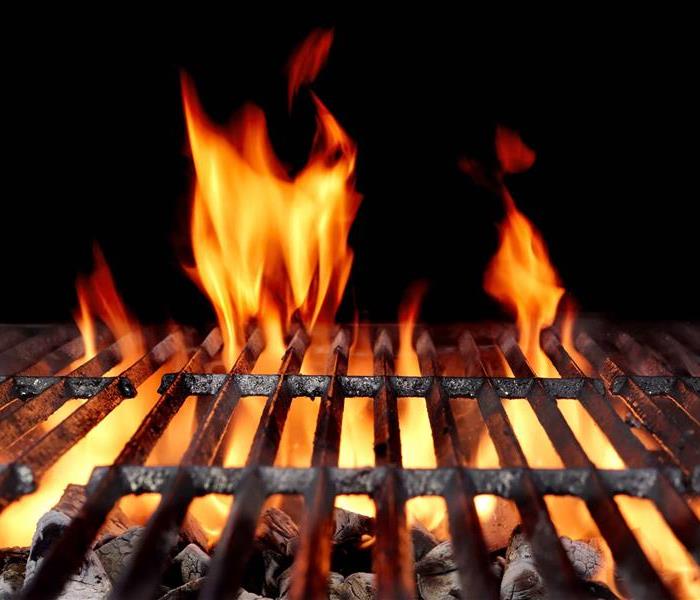 Follow these BBQ cooking tips and grill safely this summer.
Follow these BBQ cooking tips and grill safely this summer.
According to National Fire Protection Association July is the peak month for grill fires, followed by the months June, May, and August.
During the summer season when the days are longer and the weather is warmer, more families cook food outside. Whether you use gas, propane, charcoal, or a smoker, SERVPRO of East Coral Springs wants you to keep these fire precautions in mind.
For gas/propane grills:
*Check the gas tank for leaks before using it.
*Open the lid on all gas grills before lighting.
For charcoal grills:
*Use only charcoal-started fluid to start the fire.
*Make sure the coals are completely cool before disposing of them in a metal container.
For smokers as well as all grills alike, these common-sense tips apply. Make sure the placement of the grill is away from the house. Don't place it under eaves or trees. Never leave the grill unattended and ensure the kids and pets are at least three feet away. Remembering to remove the grease and fat buildup from the trays and grills after each use is important.
SERVPRO wants you to have a safe, enjoyable summer while feasting on the delicious foods you cook. We hope the delicious smokey fire smell is the only fire smell you remember this summer.
Help is only a phone call away, (954) 406-7771.
 After this garage fire, the home was badly damaged by smoke and soot. SERVPRO of East Coral Springs was able to remediate the home.
After this garage fire, the home was badly damaged by smoke and soot. SERVPRO of East Coral Springs was able to remediate the home.





 24/7 Emergency Service
24/7 Emergency Service








